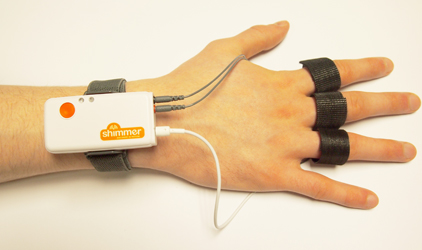

Physiological biomarkers of stress such as cortisol, are found in the hypothalamic-pituitary-adrenal axis in humans 12-16, 19-21. On the contrary, verbal abilities have been linked to enhancement of oestrogens ( e.g., estradiol) and progesterones 18.

Spatial ability, which studies have shown can include gender differences 13-17, is moderately enhanced by androgens ( e.g., dehydroepiandrosterone-DHEA, testosterone) in prenatal development and then again throughout adulthood 18.

Different aspects of cognition, for example, can be affected by hormones during different times of an individual's development. During sensitive periods of development, hormones are capable of making changes in the organization of the brain, which can have long-lasting effects on behavior 8. Psychological development of cognition is affected by hormones in many species, including human beings 7,12. Sampling of salivary biomarkers has become popular in understanding physiological foundations of individuals' responses to various stressors that can impact cognitive abilities 9. This work will supplement self-reports with salivary biomarkers and galvanic skin responses to better understand the nearer real-time responses of students to classroom activities. As such, complementary methods based on nearer to real-time responses are needed to reduce sampling biases and subjectivity when using self-reports. For example, participants' beliefs about professors' expectations and motives can affect how students respond and perform during classroom activities 7, 9-11. Moreover, self-reporting in academic settings can be multifaceted, idiosyncratic and dependent on memory, social desirability, and individual beliefs 7, 9-11. Also, language and semantics in self-reports may be understood differently between cultures and individuals 7 its meanings can change over time or represent something different in light of the situation that the participant is involved in 8. For example, self-reports are limited to the representations of the conscious mind 8, which can change the manner that individuals represent themselves. Due to its cheap cost, easy dissemination and traceability, self-report surveys are highly used in classroom settings 7. Self-reporting of academic achievement emotions in the classroom can be used to assess affective, cognitive, motivational, physiological, and behavioral components that represent the human mind. While the work will not seek to establish connections between these salivary biomarkers, galvanic skin responses and self-reports, future work will aim to further explore the underlying mechanisms that associate each response. This paper presents a protocol to study ways to explore nearer real-time responses from students ( e.g., physiological responses) when presented with representative classroom situations ( e.g., test taking) using salivary biomarkers, galvanic skin responses, and self-reported surveys and interviews. Yet, nearer to real-time responses related to academic achievement emotions are under-explored 3-6.
GALVANIC SKIN RESPONSE SENSOR PROFESSIONAL
Students' abilities to 'emotionally respond' to challenging course tasks 2 are pivotal to students' professional development. In the area of academic achievement emotions, studies indicate that understanding of students' motivations could predict students' performance, achievement, and career plans 1. The work can expand educational research capabilities through more comprehensive methods for obtaining nearer to real-time student responses to an examination activity.

Data collected from the three methods resulted in greater depth of information about students' performance when compared to the self-report. Before and after the laboratory exam session, students completed an academic achievement emotions self-report and an interview that paralleled these questions when participants wore a galvanic skin sensor and salivary biomarkers were collected. Participants were asked to complete a representative exam for their degree. A laboratory protocol to study undergraduate students' responses to classroom events ( e.g., exams) is presented. Yet, addition of biological and physiological measures such as salivary biomarkers and galvanic skin responses are rarely included, limiting the wealth of information that can be obtained to better understand student performance. Typically, self-reports are used in educational research to assess student response and performance to a classroom activity.


 0 kommentar(er)
0 kommentar(er)
